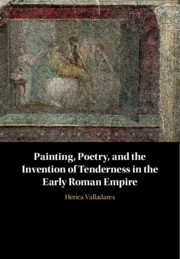
- Cited by 1
-
Cited byCrossref Citations
This Book has been cited by the following publications. This list is generated based on data provided by Crossref.
Bowditch, Phebe Lowell 2023. Roman Love Elegy and the Eros of Empire. p. 207.
- Publisher:
- Cambridge University Press
- Online publication date:
- November 2020
- Print publication year:
- 2020
- Online ISBN:
- 9781108883917


